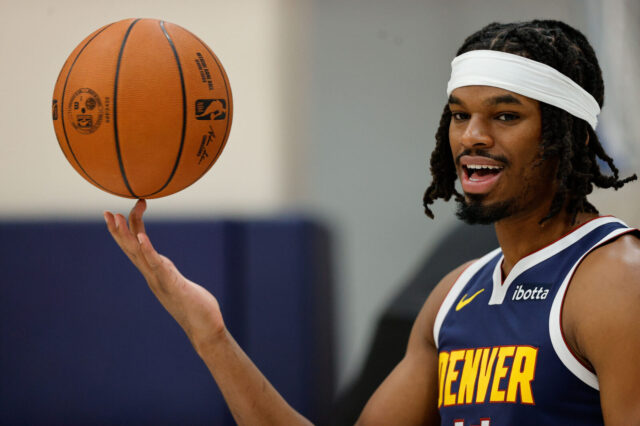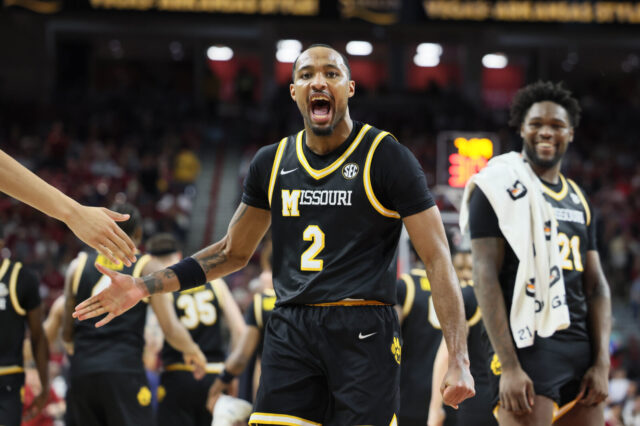As the Denver Nuggets undergo their final off day of this playoff series (not really an off day since they have practice but a non-game day) before heading into a Game 7 against the Los Angeles Clippers, it’s important to understand how the Nuggets got here.
Most predicted the Clippers to wrap up this series in six games or less. I was among those doubters who picked the Clippers in six for what it’s worth. How have the Nuggets managed to prove almost everyone wrong? What’s the secret to their success?
Let’s talk about how the Nuggets have won three games in a series where few analysts and media personalities projected them to do so:
The stars align
When discussing the series as a whole, the first premise most people utilized when evaluating this series stemmed from their inability to match up with Kawhi Leonard and Paul George. Those two wings are mismatch nightmares for basically every team in the NBA. Only the Toronto Raptors and Boston Celtics stood out to me as teams with the personnel to guard the Clippers’ stars well.
However, the same premise was not utilized when discussing Denver’s two stars: Nikola Jokic and Jamal Murray.
Let’s evaluate the two duos side by side:
This content is no longer available.
A couple of observations here:
- Nikola Jokic and Kawhi Leonard have basically played each other even in the first six games. The points and assists are comparable (Jokic is two assists and one single point off the pace Leonard has set in each of those two categories). Jokic is rebounding at a high level but also turning the ball over at a slightly alarming rate. His true shooting efficiency remains high as well, while the total plus-minus number is slightly lower than Kawhi’s due to a Game 1 in which the Nuggets didn’t have any energy after their first Game 7.
- Jamal Murray and Paul George are relatively close as well, though I’d give the edge to George based on the discrepancy in shooting efficiency. This was always going to be Murray’s biggest challenge efficiency wise that he has faced in his first two postseasons of his career. While the Utah Jazz had Royce O’Neale and little else for perimeter defense purposes, all three of Leonard, George, and Patrick Beverley are hounding, physical defenders that have forced Murray to work for every shot. The fact that his playmaking and ball security has actually improved is a testament to the improvements he’s making.
Before the series, I would have said that Leonard and George had a decided edge in this series in the star power perspective. Six games in, it’s clear that Jokic and Murray aren’t as far behind the Clippers duo as many believed they were. Murray has gone through his ups and downs but appears to be settling into a bit of a rhythm. Jokic has been as consistent as Newton’s Cradle. Both have proven to be formidable against this Clippers defense.
Taking advantage of Montrezl Harrell’s minutes
There are only four Clippers pseudo rotation players who are in the negative with regard to plus-minus this series. JaMychal Green (minus-10) as spent most of his minutes alongside one of the following players. Patrick Beverley (minus-11) continues to work his way back from injury and hasn’t always been an essential member of the offensive or defensive units. Reggie Jackson (minus-14) was pulled from the rotation after starting the series poorly.
At the bottom of the list is backup center and 2019-20 Sixth Man of the Year Montrezl Harrell at minus-29 in 108 minutes. Harrell was a positive in game 1, but since the Nuggets recovered their breath from their first round series, Harrell has been in the red for each of the last five games. The Nuggets are winning the minutes when he’s out there due to a couple of reasons.
- Clippers effective field goal percentage offensively: when Montrezl Harrell is ON the floor in this series, the Clippers have maintained a 48.6 eFG% as a team. When Harrell is OFF the floor, that number rises to 55.0 eFG%, meaning the Clippers are more efficient offensively when Harrell sits.
- Nikola Jokic: when Montrezl Harrell is guarding Nikola Jokic, the Serbian center has shot 12-of-17 from the field for 70.6 FG%. He’s also 3-of-6 from three-point range and has attempted eight free throws. Jokic’s numbers all drop a bit when Ivica Zubac is guarding him instead, though Jokic has still scored against Zubac frequently. The height difference really stands out in isolation.
The Michael Porter Jr. factor
The Denver Nuggets have played great in fourth quarters with Michael Porter Jr. on the floor. It isn’t entirely him, but he’s a significant contributor to the units that have performed well consistently in the bubble.
The most notable reason why MPJ seems to be performing well is because he’s with Nikola Jokic and Jamal Murray. Jokic is maintaining a 36.3% usage rate in the fourth quarter to go with a 70.3% True Shooting percentage. He has been unstoppable offensively in the post, in the mid-range, and beyond the arc, hitting 6-of-10 on three-pointers in the fourth quarter. Murray is at 5-of-9 from three in fourth quarters himself.
But Porter isn’t just being carried by the two stars. He’s contributing to the team’s defense and rebounding as well.
Against Donovan Mitchell, Mike Conley, and other Utah Jazz scorers in the first round, Porter was barbecue chicken for most of the first round defensively. Against the Los Angeles Clippers, Porter is finding success using his length while being more attentive. It’s rare for Porter to completely botch defensive possessions now. Mostly, they are the normal miscues that players have. A miscommunication here, an overplay there. The point being, the Nuggets have found him to be useful on the defensive end during this playoff series, and it has helped their numbers in the fourth quarter.
Denver has a 102.5 Defensive Rating with Porter on the floor in the fourth quarter of this series. That’s not something I expected.
The other definitive factor is his rebounding instincts. Above, a clutch defensive rebound created by Porter by him elevating and smacking the ball against the glass as opposed to trying to corral the ball himself. Below, a defensive stop followed by a hustling offensive rebound that Porter turns into a pure jumper for himself.
It’s clear that Porter is figuring some things out. He has become playable in late game situations and given the Nuggets another lengthy athlete to put on the court that can switch, rebound, run, cut, and hit threes. That’s exactly what they need around Murray and Jokic to close games.
This was the expectation at the beginning of the playoffs for the Denver Nuggets. They might not win, but they were definitely supposed to compete in this series, disregarding what the national media may say for a moment or two.
Lot’s of distractions and mitigating factors caught the Nuggets by surprise in the bubble, from a high number of COVID-19 cases within the organization to injuries that held out Gary Harris until Game 6 of the first round series against Utah and have forced Will Barton out of the bubble entirely without playing a single minute of regular season or playoff time. Those factors almost derailed the Nuggets from even making the second round.
Now that they are nearly at this series’ completion, it’s clear that they belong in the conversation of elite teams in the NBA. The Clippers are on their heels because of what the Nuggets are doing to them, not because they aren’t taking Denver seriously or playing with energy/intensity. Denver has sapped that energy in the second half of both Game 5 and Game 6 by playing suffocating defense and having two elite stars to rely upon for offense.
Don’t let anyone tell you differently: the Nuggets forced this series to seven games because they are really good, and they still have room for improvement as their players continue to mature.


